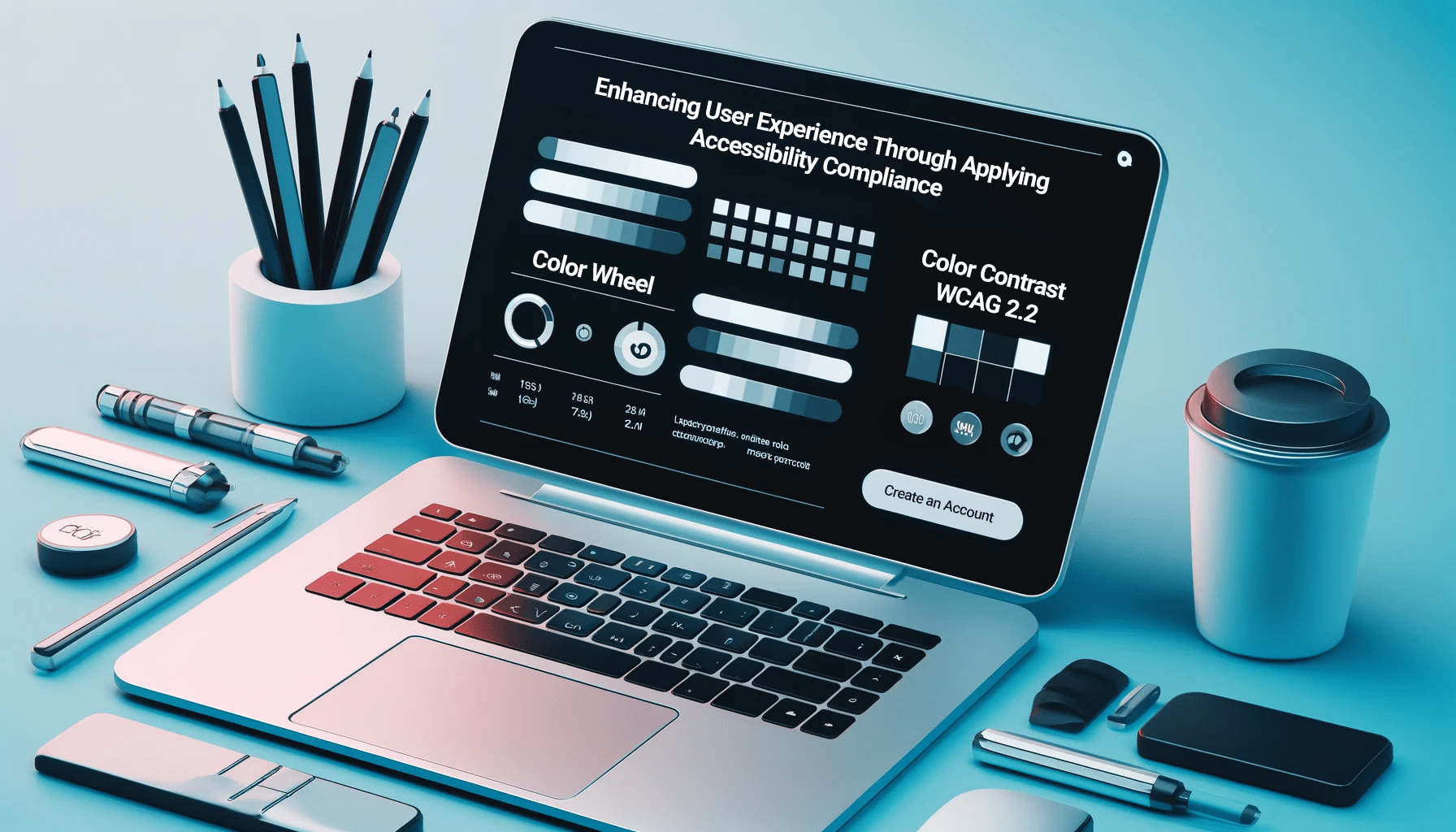Today, the Internet has become the backbone of daily life. From connecting with loved ones to managing essential tasks like shopping and healthcare, the web is an indispensable resource that simplifies and enriches our routines. Its influence extends across personal and professional spheres, redefining how we communicate, learn, and thrive.
Yet, the benefits of this digital revolution are not experienced equally by all. For millions of people with disabilities, the internet often presents barriers instead of bridges. Despite growing recognition of the need for inclusivity, many websites remain inaccessible, denying these individuals full participation in an increasingly digital society. It is thus imperative to realize why web accessibility is important!
Accessible web design is more than a technical consideration – it’s a gateway to independence and opportunity. By ensuring that websites cater to the needs of users with disabilities, organizations can create platforms that empower everyone to navigate the digital world with ease.
For users with disabilities, accessibility means finding critical information and interacting with services or products without unnecessary hurdles. By fully understanding why web accessibility is important, businesses can easily cater to various markets and audiences!
What is Web Accessibility
Realizing why is accessibility important begins with an in-depth understanding of web accessibility itself. This refers to the practice of designing and developing websites, tools, and technologies so that they can be used by everyone, including individuals with disabilities. It ensures that people with visual, auditory, motor, cognitive, or other impairments can perceive, understand, navigate, and interact with web content effectively.
Creating an accessible web environment not only benefits people with disabilities but also improves usability for all users, fostering inclusivity and promoting equal access to information and opportunities online!
5 Reasons Why Web Accessibility is Important?
Web accessibility is a vital aspect of modern website development. Beyond inclusivity, web accessibility also enhances user experience, expands reach, and aligns with legal standards, making it a critical focus for businesses, developers, and content creators. It ensures that everyone, regardless of their abilities or disabilities, has equal access to online content and services. Here are some distinct reasons why web accessibility is important:
1) Web Accessibility is a matter of Inclusivity.
Inclusivity is the cornerstone of web accessibility. By ensuring your website accommodates individuals with diverse needs, you create an environment where everyone can participate equally. The two most common forms of disability people are aware of are visual impairments and hearing impairments. Usually, businesses try to add features to accommodate these disabilities. For example, providing alt text for images supports visually impaired users who rely on screen readers, while captioning videos aids those who are deaf or hard of hearing.
Other forms of disabilities that limit a person’s ability to navigate the internet include:
- Conditions that affect motor abilities, such as arthritis, paralysis, and muscular dystrophy.
- Conditions that affect cognitive abilities, such as epilepsy-related cognitive dysfunction.
Web accessibility allows people with disabilities to participate fully in society and access the same information and services as everyone else. This promotes equality, diversity, and inclusivity.
2) Web Accessibility improves the User Experience for Everyone.

Improving web accessibility creates a better user experience for everyone—especially people with disabilities.
When designing a website, the business’s main priority is to ensure they answer the user’s questions and guide them to the solution. This can be accomplished by providing blog articles and video content and by incorporating a UX-optimized design that’s web-accessible.
However, none of these options will provide equal access for those with disabilities if they aren’t launched with web accessibility in mind. For instance:
- Captions and transcripts make videos accessible for those who cannot hear the audio as well as those who watch the video on mute.
- Alternative text for images benefits people using screen readers, as well as those with slow internet connections or who prefer to browse without images.
Thankfully the Web Content Accessibility Guideline (WCAG) provides businesses with guidelines to follow. However, even with guidelines, important elements to creating more web-accessible content are still missing. Within the last four years, accessible websites had common WCAG 2 (Web Content Accessibility Guidelines 2) homepage failure types, including the following:
- Low contrast text
- Missing alt text for images
- Empty links
- Missing form input labels
- Empty buttons
- Missing document language
These items represent low-tech and high-tech accessibility features that someone with coding experience could optimize on a website. By taking the extra steps to optimize accessible websites, you provide the opportunity for disabled users to find solutions within your business.
3) Web Accessibility provides Better SEO Rankings & less maintenance

Every business has one main: to drive traffic to its website. One method used to drive website traffic is search engine optimization (SEO), which helps your website rank higher in search results. By creating an accessible website, you increase your probability of ranking higher in search engine results pages (SERPs) as web accessibility aligns closely with search engine optimization (SEO) best practices. Accessible websites are easier for search engines to crawl and index, leading to improved rankings. Structured content, descriptive headings, and text alternatives for media contribute to better discoverability. \
Roughly 50% of the website traffic for a business comes from organic search. For ultimate success, the goal is to be displayed amongst the top five search results on Google, which accounts for over 50% of all the clicks. A well-structured, accessible website goes a long way to meeting this goal.
Creating well-structured and accessible websites with, improved keywords and clear navigation, that is also mobile-optimized is just half of what you need to increase your SEO ranking. Enhancing your web accessibility makes up the other half.
4) Web Accessibility ensures Compliance with Regulations and Laws.

Web accessibility is not just a moral obligation but also a legal compliance issue. Governments worldwide have established web accessibility standards, such as the Web Content Accessibility Guidelines (WCAG). Non-compliance can result in legal consequences, including fines and lawsuits.
In Canada, we have multiple laws to improve web accessibility within our society. Examples of web accessibility AODA requirements can be found in the following acts:
- ACA, Accessible Canada Act
- AODA, Accessibility for Ontarians with Disabilities Act
- AMA, Accessibility for Manitobans Act
- ACR, Accessible Canada Regulations
- ASC, Accessibilities Standards Canada
While each law has particular web content accessibility guidelines, the overall goal is to ensure businesses are taking the actions necessary to include web accessibility features that allow disabled users to access information, services, and products as someone without disabilities would.
5) Web Accessibility broadens your Customer Base.

If someone told you they had a checklist to help you broaden your customer base, would you take it?
Following the accessibility acts in Canada does exactly that.
By enhancing your web accessibility, you can reach a wider audience, including people with disabilities. This is an untapped market segment, estimated to have a collective buying power of up to $490 billion.
An accessible website opens doors to a larger audience, including millions of individuals with disabilities. By addressing their needs, you not only enhance their experience but also tap into an often-overlooked market segment.
Accessible websites create equal opportunity and a level playing field, allowing businesses to tap into this potential customer base. And this is why web accessibility is important:
A) More people are buying things online.
In 2022, e-commerce stores in December alone generated over four billion Canadian dollars in sales. Due to the convenience of purchasing things online, e-commerce sales are projected to continue their growth.
However, people without disabilities aren’t the only ones that enjoy the convenience of online shopping—those with disabilities greatly benefit from it as well.
Therefore, ensuring your website’s customer journey is accessible—like adding alt text to product images and including clear text on all action buttons—helps provide a positive user experience to those with disabilities.
B) More people are turning to online learning.
Among the many things we learned during COVID was that our society could also function online. Although the universities closed down, many programs provided online learning to allow students to continue their education.
As the convenience of online learning grew, it tapped into a growing market. Online university learning is expected to reach over US$ four billion in 2023 and is also expected to continue growing.
And as technology advances in general, so does the technology that assists those with disabilities. Screen readers have improved to a point where they can now completely decipher a page, allowing someone who’s visually impaired to benefit from the online world as well.
Therefore, someone who relies on screen readers can (and should) receive an education online if the university’s courses and applications are accessible.
C) More people rely on technology to do daily chores.

It’s fair to say that everyone’s favorite service is the one that provides assistance with chores.
In today’s society, where it’s now normal for both heads of households to work a full-time job, services like housekeeping, dog walking, and even grocery shopping provide convenience. People with disabilities especially benefit from these services.
How Accessibility Partners Can Help Make Your Website Accessible?
Recognized Government Vendor
We are a trusted provider of accessibility services across all levels of government in Canada. After completing rigorous vendor qualification processes, we are proud to be listed on several Vendor of Record (VOR) lists, ensuring our services meet the highest standards for federal, provincial, and municipal organizations.
Detailed Reports
Our detailed accessibility audit reports offer a clear view of the accessibility of your digital as well as physical spaces, from executive summaries to in-depth remediation plans. We provide actionable steps to improve compliance and usability, empowering you to address accessibility issues effectively.
Customized Solutions
We understand that each website has unique needs. Our tailored solutions focus on addressing specific challenges while ensuring long-term compliance and sustainability, helping your website maintain accessibility standards over time.
Industry-Recognized Tools
We use advanced, industry-recognized tools like Compliance Deputy, aXe, WAVE, and screen readers such as JAWS and NVDA to provide precise website accessibility testing. These tools help identify accessibility barriers, ensuring we deliver targeted, effective solutions for your site.
Expert Guidance
Our accessibility experts provide actionable, clear guidance to help you resolve issues and enhance usability. We work closely with your team to ensure compliance with WCAG 2.2 and improve the overall user experience for all visitors.
Proven Track Record
With a strong track record in securing government qualifications, we have established ourselves as a reliable partner in accessibility. Our experience across federal, provincial, and municipal levels makes us a trusted choice for organizations seeking to meet their accessibility goals.
Web Accessibility is the Key Factor to Ensuring a Positive Web Experience for all.
Every business has a solution to their customer’s problem—it’s why they’re in business. But that solution is only helpful if it helps everyone seeking it. This is why web accessibility is important and not just a buzzword or a nice-to-have feature. It is a crucial aspect of web design that ensures everyone can interact with your website regardless of their abilities.
By creating an inclusive web environment, you can promote equality, foster better user experiences, comply with legal obligations, improve SEO rankings, and broaden your customer base.
Click the link below to talk to our accessibility experts and find out how we optimize your website’s accessibility. Contact Accessibility Partners
Conclusion
So, why is accessibility important in web design? Firstly, it’s not just some technical requirement; Web accessibility is a fundamental principle of creating an inclusive digital world. By prioritizing accessibility, you ensure equal access for all, enhance user experience, improve SEO performance, comply with legal standards, and expand your audience. Whether you’re a business owner, developer, or content creator, investing in web accessibility benefits everyone involved.
Frequently Asked Questions
How can I ensure my website is accessible?
Follow WCAG guidelines, evaluate accessibility with tools, use alt text for images, and caption videos, ensure proper color contrast, and test with assistive technologies.
How often should I check my website for accessibility issues?
Audit your site regularly, especially after updates or new features, to maintain compliance and resolve issues promptly.
What are the legal requirements for web accessibility?
Legal requirements differ by region but often the point of reference is WCAG. For instance, the Accessible Canada Act (ACA) and provincial laws like the Accessibility for Ontarians with Disabilities Act (AODA) mandate accessible digital experiences.
Is it expensive to make my website accessible?
Initial costs may apply, but accessibility reduces long-term expenses by preventing retroactive fixes and expanding your audience.
Can web accessibility increase my website’s audience?
Yes, accessibility makes content usable for individuals with disabilities, enhancing user experience and engagement for all.






